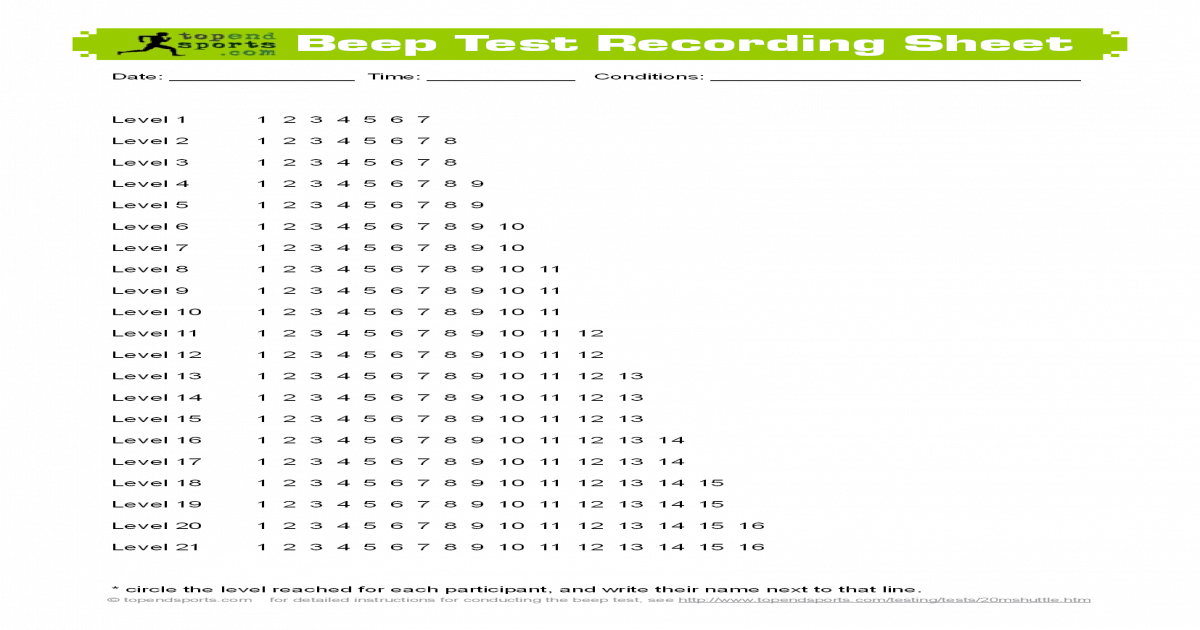

Who invented the Yo-Yo test?ĭanish soccer physiologist Dr Jens Bangsbo had introduced the Intermittent Recovery Test (Yo-Yo test) in the 1990s. The level for New Zealand cricketers is set at 20:1. The benchmark level for the Indian cricket team is 16:1, which covers 1120 metres. The process is software-based and the results are recorded. Once a player misses two beeps, their test ends.

It starts with level 5, which consists of one shuttle, level 11 has two shuttles and so on and gets gruelling as it progresses. This leads to an increase in the running speed.

The number of shuttles per level increases too although not mathematically. As the level of each shuttle goes up, the duration benchmark for the completion of the shuttle decreases. There’s a seven second recovery period between each shuttle. The Yo-Yo test in ultra slow-mo #INDvNZ - batch 2 : /2UkBBtZcbn Once the return trip is done, it marks the completion of a shuttle. The player then has to return to the initial cone before the third beep sounds. Once the beep is sounded, a player has to reach the cone on the other side at the next beep. The Yo-Yo test is a variation of the Beep test, a running aerobic fitness test that involves running between two sets of cones that are 20 metres apart (incidentally the length of a cricket pitch). Interestingly, several cricketers including Yuvraj Singh, Suresh Raina, Ambati Rayudu, Mohammed Shami, Sanju Samson and recently Varun Chakravarthy have failed to clear the Yo-Yo test. This test is considered to be one of the main reasons for the massive improvement in fitness levels among players today. The timings of the test is different, though the main difference with the yo-yo test is that in the commonly used version, there is a 10-second recover period between 40m runs.The Yo-Yo test has become a talking point in recent years ever since it set the benchmark for selection in the Indian cricket team. Yo-Yo Test - Like the beep test, the Yo-Yo test is a maximum aerobic endurance fitness test, involving running between markers placed 20 meters apart, at increasing speeds, until exhaustion.Treadmill Tests - there are several common treadmill incremental running tests to exhaustion, such as the Balke and Bruce protocols.Heart rate may be recorded during the test and/or for some period afterwards. On the platform at a given rate for a certain time Step Tests - The athlete steps up and down.Walking/Running Tests - tests in which the participants run or walk for a set distance or time, such as the Cooper 12 minute Test, in which participants try and cover as much distance as they can in 12 minutes.The alternatives to the beep test include the large range of aerobic fitness tests: Not only is there the official beep test version, there are also a couple of modified versions of the beep test, and many alternatives to the beep test that measure similar aspects of fitness.


 0 kommentar(er)
0 kommentar(er)
